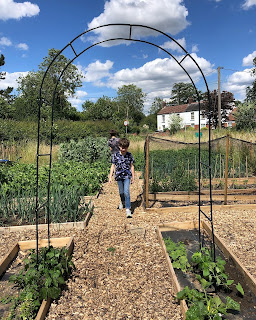You may think that play equipment choices only include the brightly coloured plastic cheap looking (despite the cost not being so cheap generally).
Still, you may be surprised to learn that a great range of natural material play equipment is sturdy enough for adults to use too.
If you are going to buy play equipment, why not consider a more natural look for your outdoor space where the whole family can benefit?
Not only could it last much longer, but it could be more aesthetically appealing in your garden too.
The benefits of natural materials for outdoor gym equipment
Quality wooden and stainless steel outdoor gym and play equipment is incredibly sturdy and hardwearing and is perfect for families to have for many generations. With that in mind, you can transform your garden or open space to have play equipment that the whole family can use.
Choosing natural wood will mean it can be used all year round, it will last longer than plastic as the sun doesn't do the same damage to wood as it does the plastic children's equipment, and it will look and feel natural even on the hotter days. Natural woods such as oak and Robinia look great too and are a far more realistic view from a living room window, so your garden will not feel overrun by bright artificial plastics.
Sensory and Sustainable
Children can learn the feel of natural wood when playing outside. Wood and metals offer a greater sensory experience. Far too often, overused plastic is the main focus of children's play, so having the opportunity, whether in your own garden or by a family trip to the park, is great for children to learn about the benefits of sustainable and natural materials.
Choosing natural resources is possible through suppliers such as PlayEquip, who can provide professional advice, individual outdoor play and gym equipment, and bespoke solutions for your home garden or local open space.
How to choose equipment for all ages
Spending time outside is essential for both adults and children to help look after overall fitness and health and improve mental wellbeing, so why not have fun and play together. With the right outdoor play equipment families can take traditional bonding time outdoors. Choosing sturdier equipment means adults can join in with the kids having fun and getting fitter while they do so.
Exercising as a family is a great way to set good habits, encourage those less able, and build on what each person can do. Often exercise is one of the first things to be forfeited if time is tight, and visits to the gym can get in the way of everyday family life, so choose play equipment that offers options for the whole family.
Examples could include
· Outdoor pull-up bars
· Monkey bars
· Climbing walls
· Weave bars
· Rope climbs
· Balance beams and wobble boards
· Trampolines
Exercise targets to reach
Consider family play equipment that enables you as a family to exercise using the three key exercise focuses
· Aerobic – raising your heart rate for a prolonged period. Such as jumping on a trampoline. They can be sunk into the ground, making them safer for all ages.
· Strengthening – pulling up on monkey bars, pull-up bars, and climbing walls to improve arm, leg and core body, spine, and abdomen strength
· Flexibility - balance boards, wobble boards, and everything else we have already mentioned will help build body flexibility for all ages.
As we age, we should keep on top of regular daily exercise, and spending time outside exercising is good for our health too, so using family-friendly outdoor play equipment with or without the kids will improve overall health and help in everyday life chores too.
Flexible solutions to suit your space
If you have a small garden, don't have room for an indoor gym, or don't like or want plastic only safe for small children in your garden or open space, then natural wood and metal choices are the answer.
Whether you buy a bespoke set-up or individual pieces, there is a wealth of play and outdoor gym equipment that the whole family can use, and it will look far more natural and enable you to connect with nature.
*sponsored post

























